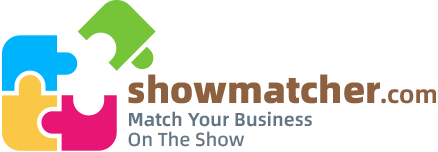Metal Additive Manufacturing: A Growing Market and Its Various Techniques
"
Metal additive manufacturing is driving the industrialization of 3D printing, with significant advancements in the last decade. This technology, originally developed in the 1980s, has seen a remarkable increase in
Date:April 27, 2025
Latest Exhibition News
Hydrogen Technology Expo North America 2025
--April 26, 2025
Cybersecurity Activist Max Schrems Files Complaint Against OpenAI
--April 26, 2025

Metal additive manufacturing is driving the industrialization of 3D printing, with significant advancements in the last decade. This technology, originally developed in the 1980s, has seen a remarkable increase in its applications across various industries, from aerospace and defense to automotive and medical. The metal AM market is valued at $4.55 billion in 2024 and is expected to grow to $19.24 billion by 2033, representing a compound annual growth rate of 17.39%. The demand for complex, lightweight parts is a key driver of this growth.
Several types of metal additive manufacturing exist, each with its unique advantages and limitations. Powder Bed Fusion (PBF) is one such method that uses a laser or electron beam to melt and solidify metal particles in a powder bed. This technique is ideal for producing intricate designs and lightweight parts but is limited by the size of the printing plate and slower printing speed, making it more suitable for small production runs and customized products.
Directed Energy Deposition (DED) technology differs from PBF in that it uses a nozzle on a multi-axis robotic arm to deposit metal layers directly onto existing parts or large metal structures. DED is faster and better suited for repairing large parts or creating large-scale products, although it may not produce as detailed parts as PBF.
Binder Jetting (BJT) involves using a liquid bonding agent to bind metal powders layer by layer. This method can create products from multiple materials but requires post-processing through sintering to achieve the desired strength. BJT offers speed and lower costs compared to some other methods but may require additional processing steps.
Material Jetting (MJT) sprays tiny droplets of liquid metal onto a build platform, solidifying them with ultraviolet light. MJT can combine different materials into one product and offers high accuracy but is one of the slower options for metal additive manufacturing.
Material Extrusion (MEX) involves extruding melted metal wire or rod through a nozzle to create layers of material. MEX tends to be cost-effective for smaller manufacturers but often requires post-processing including debinding and sintering.
Sheet Lamination (SHL) involves bonding metal sheets together either through adhesive or welding before removing excess material with laser cutting or CNC machining. SHL offers cost-effective prototype production but has higher material waste and slower production times due to additional subtractive manufacturing steps.
Vat Photopolymerization (VPP) uses ultraviolet light to solidify metal powder dispersed in liquid resin, offering quick production times but at higher costs compared to other methods. VPP is suitable for prototyping and manufacturing micro-parts.
The adoption of these technologies continues to be driven by top industries such as automotive, aerospace, and healthcare, while expanding into new sectors like energy. As the cost barrier decreases, smaller manufacturers and niche industries are also adopting these technologies. For those interested in learning more about metal additive manufacturing or exploring new market opportunities, RAPID + TCT is North America’s largest event dedicated to additive manufacturing and industrial 3D printing. The event will take place from April 8-10, 2025, at Huntington Place in Detroit, MI.
Several types of metal additive manufacturing exist, each with its unique advantages and limitations. Powder Bed Fusion (PBF) is one such method that uses a laser or electron beam to melt and solidify metal particles in a powder bed. This technique is ideal for producing intricate designs and lightweight parts but is limited by the size of the printing plate and slower printing speed, making it more suitable for small production runs and customized products.
Directed Energy Deposition (DED) technology differs from PBF in that it uses a nozzle on a multi-axis robotic arm to deposit metal layers directly onto existing parts or large metal structures. DED is faster and better suited for repairing large parts or creating large-scale products, although it may not produce as detailed parts as PBF.
Binder Jetting (BJT) involves using a liquid bonding agent to bind metal powders layer by layer. This method can create products from multiple materials but requires post-processing through sintering to achieve the desired strength. BJT offers speed and lower costs compared to some other methods but may require additional processing steps.
Material Jetting (MJT) sprays tiny droplets of liquid metal onto a build platform, solidifying them with ultraviolet light. MJT can combine different materials into one product and offers high accuracy but is one of the slower options for metal additive manufacturing.
Material Extrusion (MEX) involves extruding melted metal wire or rod through a nozzle to create layers of material. MEX tends to be cost-effective for smaller manufacturers but often requires post-processing including debinding and sintering.
Sheet Lamination (SHL) involves bonding metal sheets together either through adhesive or welding before removing excess material with laser cutting or CNC machining. SHL offers cost-effective prototype production but has higher material waste and slower production times due to additional subtractive manufacturing steps.
Vat Photopolymerization (VPP) uses ultraviolet light to solidify metal powder dispersed in liquid resin, offering quick production times but at higher costs compared to other methods. VPP is suitable for prototyping and manufacturing micro-parts.
The adoption of these technologies continues to be driven by top industries such as automotive, aerospace, and healthcare, while expanding into new sectors like energy. As the cost barrier decreases, smaller manufacturers and niche industries are also adopting these technologies. For those interested in learning more about metal additive manufacturing or exploring new market opportunities, RAPID + TCT is North America’s largest event dedicated to additive manufacturing and industrial 3D printing. The event will take place from April 8-10, 2025, at Huntington Place in Detroit, MI.
Latest Exhibition News
Hydrogen Technology Expo North America 2025
--April 26, 2025
Cybersecurity Activist Max Schrems Files Complaint Against OpenAI
--April 26, 2025
Update:2025-04-11
Current location: Home>Latest Exhibition News>Metal Additive Manufacturing: A Growing Market and Its Various Techniques


